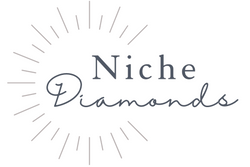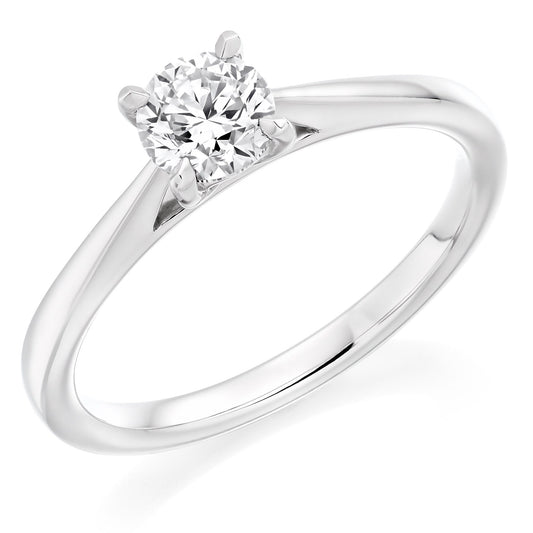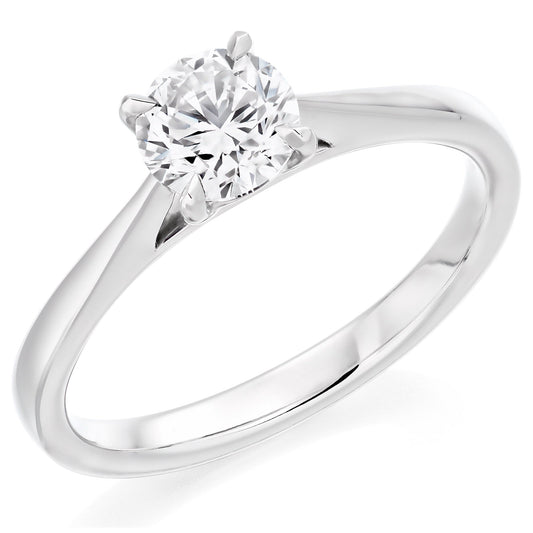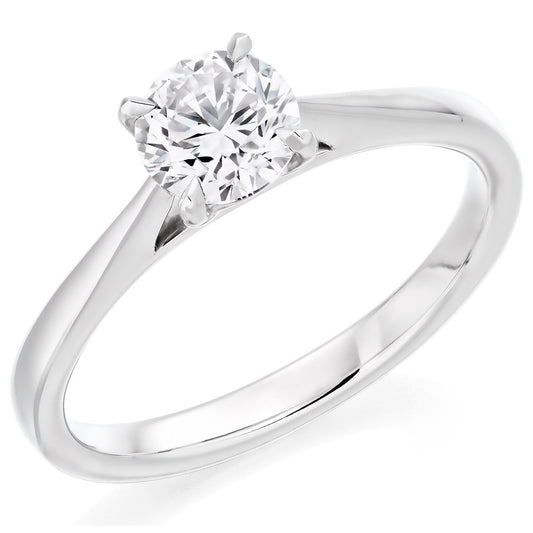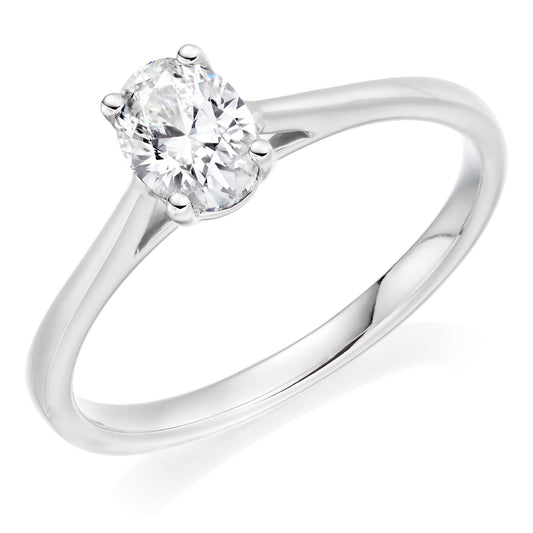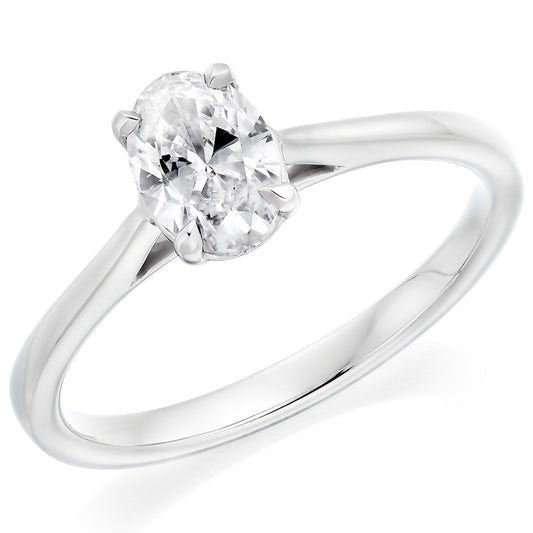Diamond FAQs
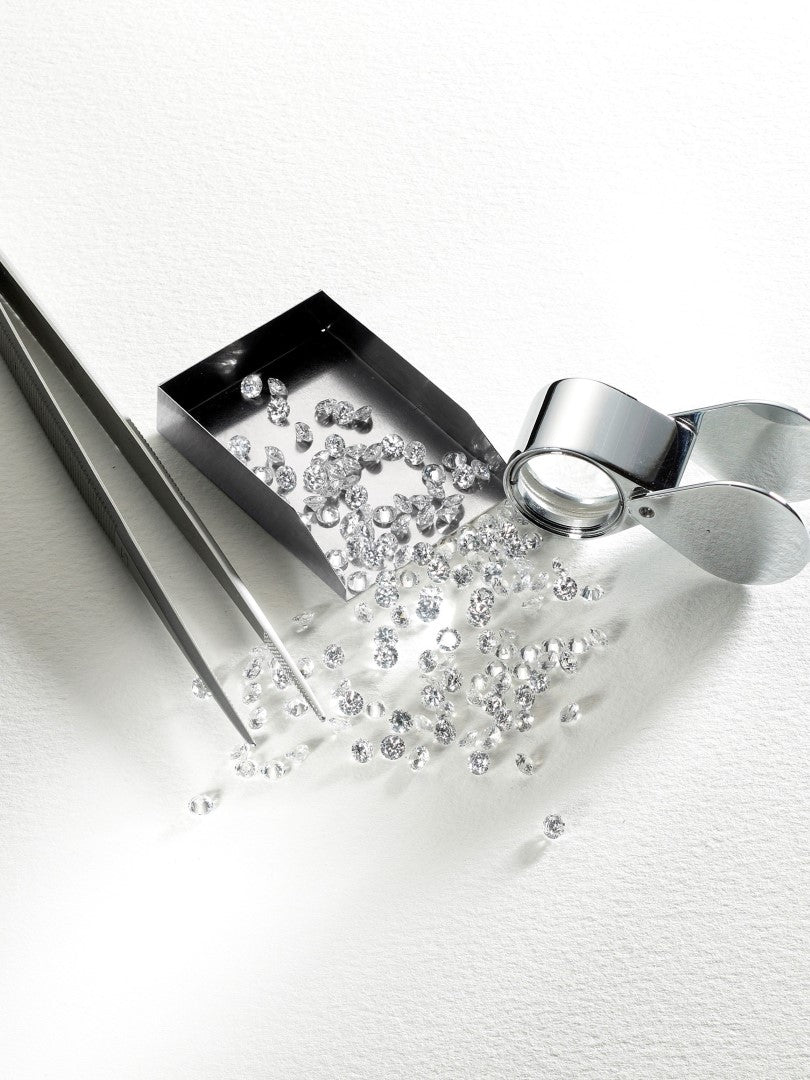
Questions?
From the 4Cs to diamond certifications and care tips, we've compiled some of the most frequently asked questions about about diamonds. Let's dive into the world of diamonds and unveil the brilliance that each precious stone holds. For a more in-depth overview of what you need to know about diamonds, head to our Diamond Guide.
We're dedicated to providing you with the knowledge to make informed decisions when it comes to purchasing diamond jewellery.
Diamond FAQs
-
1. What are the 4Cs of diamonds?
When it comes to diamonds, the 4Cs (cut, clarity, colour and carat Weight) play a pivotal role in determining a diamond's overall quality, appearance, and value. The cut defines how well a diamond reflects light, and is graded from excellent through to poor. We only recommend Excellent or Very Good cut gradings. Clarity refers to the presence of internal flaws or inclusions, and colour ranges from colourless to faint yellow. Carat weight denotes the diamond's weight, which is different to the visible size. The diamond table refers to the flat, topmost surface of the diamond.
-
2. How do I choose the right shape?
Diamonds come in a diverse array of shapes, each with its own unique allure. From the classic brilliance of a round diamond to the modern elegance of a princess cut, your choice of shape can reflect your personality and style. Learn about the different shapes available in our Diamond Guide along with factors to consider when selecting the one that speaks to you. It comes down to personal taste, but keep in mind that classic cuts such as round, princess, emerald, oval and pear diamonds will be classic designs for years to come, particularly in a solitaire design.
-
3. How do I care for my diamonds?
To maintain and care for your diamond jewellery's timeless allure, follow a few simple steps. Regularly clean your pieces using a mild solution of warm water and gentle dish soap, using a soft brush to remove dirt and residue. Store your jewellery in separate compartments or soft pouches to prevent scratching. Avoid exposing your diamonds to harsh chemicals or extreme temperatures. Schedule professional cleanings and inspections to ensure settings are secure. With proper care, your diamond jewellery will continue to shine brilliantly for generations to come.
-
4. Why do diamonds vary in price?
Diamonds vary in price due to a combination of factors. Cut, clarity, colour and carat all influence a diamond's value, with higher grades commanding higher prices. Rarity also plays a role; larger carat weights, colourless stones, and flawless clarity are scarcer and more valuable. Additionally, market demand, diamond shape, and fluorescence impact pricing. Ethically sourced diamonds or those with exceptional craftsmanship might also come at a premium. Balancing these factors helps you find a diamond that aligns with your budget and preferences.
Beyond the 4Cs
-
5. What is diamond fluorescence?
Diamond fluorescence is a natural phenomenon that refers to a diamond's tendency to emit a soft glow when exposed to ultraviolet (UV) light. Not all diamonds fluoresce, and the degree of fluorescence can vary. The fluorescence of a diamond is typically caused by the presence of trace elements, primarily nitrogen, within the diamond's crystal lattice. When these nitrogen atoms absorb energy from UV light, they can re-emit it as visible light, resulting in the characteristic glow. Diamond fluorescence is a natural characteristic that adds a layer of uniqueness to each diamond, and can affect a diamond's appearance.
-
6. Is diamond fluorescence bad?
The impact of diamond fluorescence on a diamond's value and desirability is a subject of debate within the diamond industry. Generally, diamonds with faint to medium fluorescence typically don't experience significant differences in price or appearance compared to diamonds with no fluorescence. However, diamonds with strong or very strong fluorescence might experience a slight reduction in value, particularly if it creates a noticeable cloudiness or hazy appearance. It is often a matter of personal preference. Some individuals may appreciate the unique glow that fluorescence brings, while others might not.
-
7. Do I need a diamond certification?
A diamond's certification is a guarantee of its quality and authenticity. Reputable gemological institutes provide diamond certifications, such as the Gemological Institute of America (GIA) and the International Gemological Institute (IGI). You don't need to get a diamond certified, but buying a certified diamond can offer peace of mind and serve as a testament to its qualities and characteristics. However, not all diamonds come with a certification, as it is only conducted on diamonds over 0.25 carat. For example, on a diamond wedding band or eternity ring, you will typically have a larger number of smaller diamonds and it would not be feasible to have each one certified. Find out more about diamond certification.
-
8. Are lab grown diamonds ok?
The rise of lab-grown diamonds has added a new dimension to the diamond industry. Also known as synthetic or lab-created diamonds, they offer both advantages and drawbacks. Possible advantages include ethical sourcing, environmental friendliness, and lower cost than natural diamonds. These diamonds share the same physical and chemical properties as mined diamonds, making them indistinguishable to the naked eye. However, some people may perceive them as lacking the allure of rarity and heritage. The decision between natural and lab grown diamonds hinges on personal values, budget, and aesthetics. Find out more about lab diamonds in our blog.
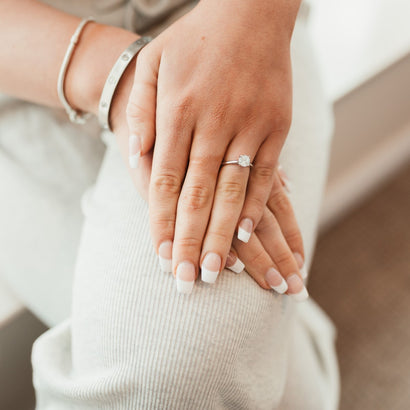
Classic collection
Be inspired
Browse our delectable classic solitaire designs. Let your diamond take centre stage in your perfect ring.
Shop now